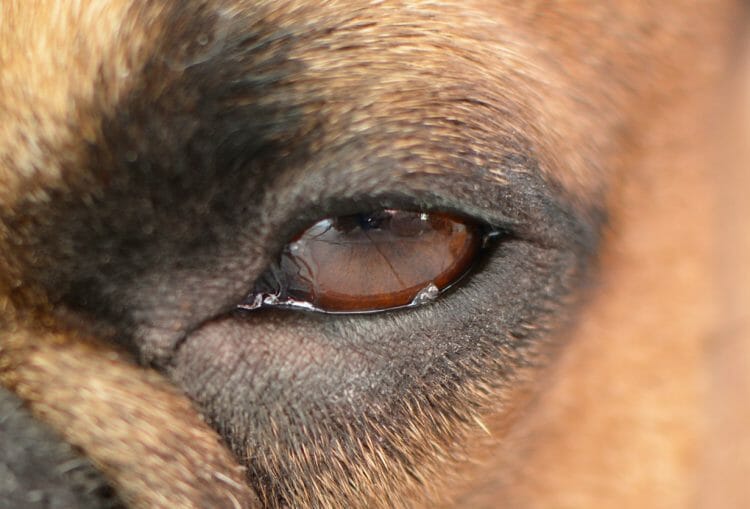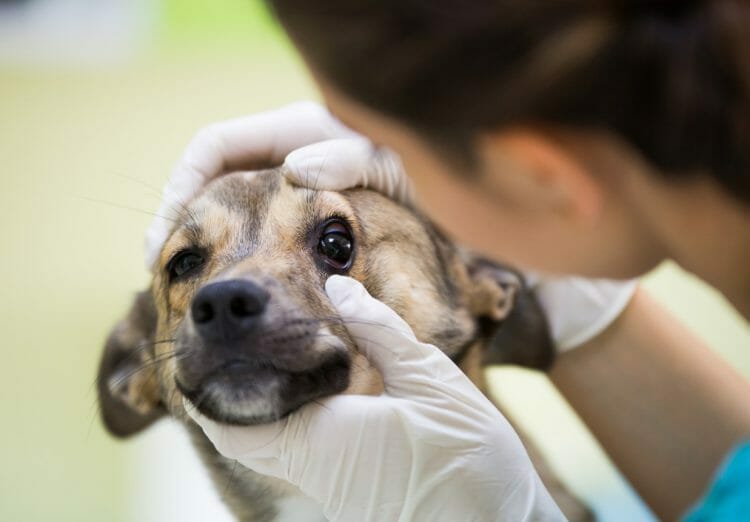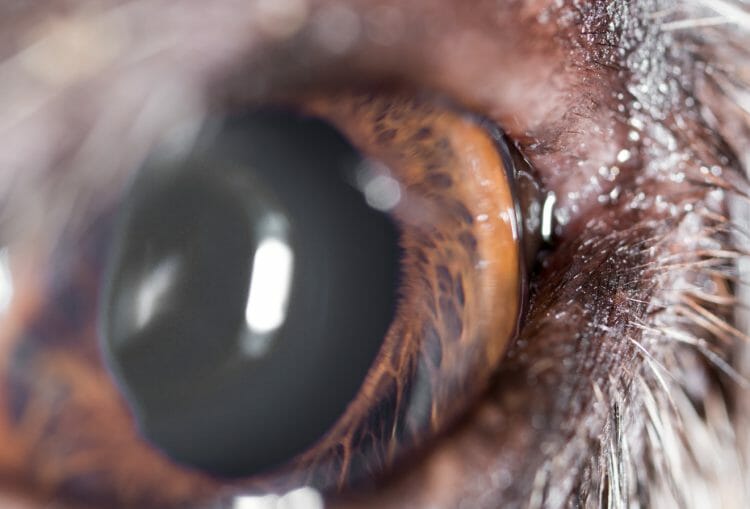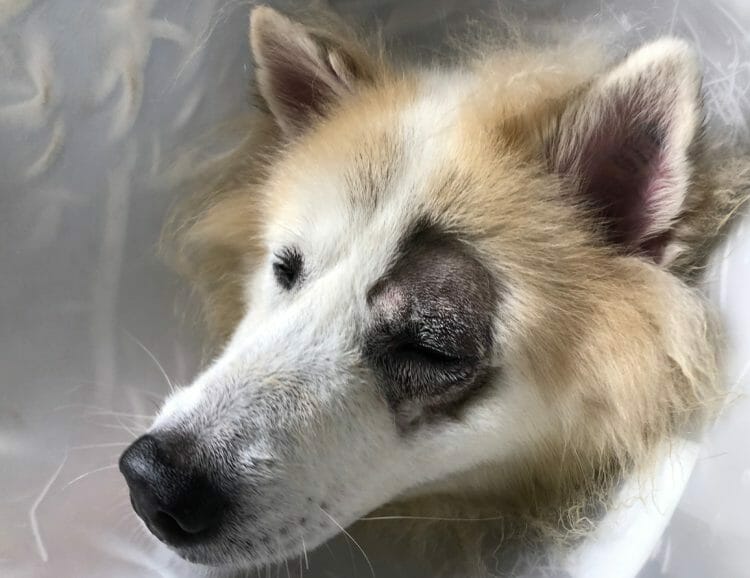What Is an Eyelid Mass in Dogs?
It is common to find a dog eyelid mass, particularly with older canines. A mass on a dog’s eyelid may or may not be detrimental to its health. Fortunately, in most cases, these tumors are benign. This means that they will not spread to other parts of the animal’s body. When a mass is benign, it may go away on its own.
No specialist equipment is needed to identify these masses, which may form either inside or outside the eyelid. Eyelid masses will often become larger with time. This can cause both functional and structural changes to the eyelids, along with irritation of the cornea. When a tumor grows, it can stop the dog from blinking or closing its eyelid, the eye itself may become damaged, and entropion may occur.
In some circumstances, an eyelid mass may be malignant. In these cases, it is essential that a quick diagnosis is obtained so that the appropriate treatment can be provided.
Obtaining an early diagnosis and treatment will limit further problems, such as:
- Ulcers
- Self-trauma
- Inflammation and opacification of ocular tissue

Types of Eyelid Mass in Dogs
There are three potential types of eyelid masses in canines:
- Meibomian gland adenoma
- Melanoma
- Papilloma
Each type differs in appearance and can often be identified easily.
Meibomian Gland Adenoma
Dog eyelids contain dozens of Meibomian glands, which are a type of sebaceous gland. The Meibomian glands secrete oil used to maintain healthy tear film. This is responsible for moistening and lubricating the eyes. Without this fluid, the dog could develop keratoconjunctivitis sicca — dry eye.
Occasionally, bumps form on the eyelid because of blocked oil from these glands. The bumps can eventually become tumors. When a mass arises from the Meibomian gland, it will visibly protrude the eyelid margin. The mass will be lobular and pink in color with a varying amount of pigmentation. Sometimes these masses will ulcerate and bleed.

Melanoma
There are two different types of eyelid melanomas that affect dogs. The first is found in the skin of the eyelid and usually consists of one smooth mass that is pigmented and protruding. This type of melanoma can usually be removed surgically.
The second type of eyelid melanoma is found in the pigmented margin of the eyelid. It is broad and flat and will expand in every direction. Treatment for this type of melanoma requires the removal of large parts of the eyelid margin. Alternatively, topical chemotherapy and cryotherapy may be used.
Papilloma
Papilloma masses are typically caused by a virus. Their appearance will vary and can be pink or white with cobblestone or pedunculated appearance. These tumors tend to affect younger dogs more. However, they can occur at any age. When a young dog is affected by this type of mass, a regression can occur without treatment.

Diagnosing Masses on a Dog’s Eyelid
In the instance of any mass on a dog’s eyelid, it is essential to seek out the opinion of a veterinarian who will assess whether the tumor is malignant or benign and whether its presence will harm the function of the eye.
Using a procedure called fine needle aspiration (FNA), the veterinarian will take a small sample of the tumorous cells. These cells will then be placed onto a microscope slide and sent to a veterinary pathology laboratory for a thorough analysis.
When the results of the FNA are inconclusive, the veterinarian may opt to completely remove the tumor and have the pathologist assess it to provide a definitive diagnosis. Any tumor that is examined in this way by the veterinary pathologist is known as histopathology. Carrying out this type of examination will not only ensure that a diagnosis is achieved but will also help identify the behavior of the tumor.

Treating a Mass on a Dog’s Eyelid
When a dog has a benign tumor, the best course of action is usually to leave it alone. However, it is essential that a veterinarian is consulted to ensure that it is not malignant and will not cause disruption to the animal’s welfare. If the tumor is still quite small and the dog is unaffected, the veterinarian may advise monitoring the mass and returning for an additional exam if the mass grows.
Any mass that has grown or is malignant will require surgical removal. There are several approaches that the veterinarian may take, and the specific option will largely depend on the precise location and the type of mass.
When the mass is the result of blockages in the meibomian gland, the gland will need to be removed in addition to the mass. This will be carried out under general anesthesia and the veterinarian will close the incision using sutures.
To provide a bloodless incision, the veterinarian may opt for laser surgery. During this procedure, the dog’s cornea and skin will be shielded. Depending on the size and location of the tumor, either local or general anesthesia will be used. The incision will need to be closed using sutures.

A less invasive treatment (such as cryosurgery) may also be an option. In this type of procedure, the mass will be frozen so that it falls off. This leaves no blood, no incision, and no need for sutures.
Cryosurgery can be used to remove small cysts. The procedure may also be used alongside traditional surgical techniques to remove smaller masses that reside alongside larger tumors. Any cells that are destroyed using this procedure will not grow back.
Following any surgical procedure, wearing an E-collar may be necessary. This will help prevent the dog from pawing at its face and causing irritation to the recently treated area. Immediately after the procedure, it is not uncommon to notice some swelling or blood around the eyes. This should subside within a week.
Providing anesthesia to older dogs can pose a risk, so surgery may not always be possible. In these circumstances, the veterinarian may provide eye drops to lubricate the eyelid and allow it to move easily over the cornea. This will help improve the dog’s comfort levels



